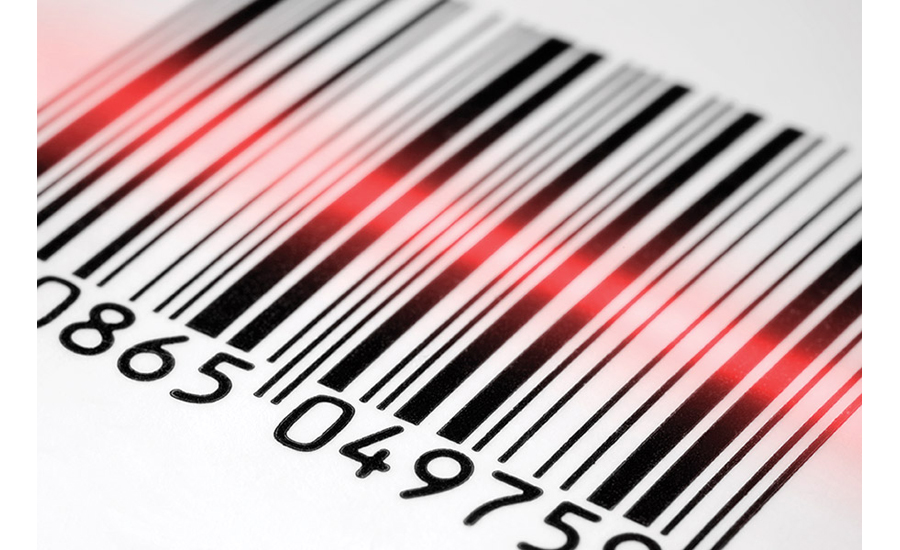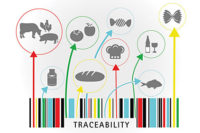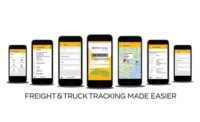The way food travels throughout the supply chain from farm to fork is undergoing a serious change to align with the new ways consumers think and shop. Consumers want to know more about their food and where it comes from, which represents a major opportunity for food manufacturers and their trading partners to implement effective traceability programs. Manufacturers, distributors, and retailers can work together to not only deliver on expectations for transparency, but ensure a safer food supply chain. With so much national attention on foodborne illness outbreaks, now is the time for food companies to evaluate the effectiveness of current traceability programs, or accelerate the development of one if it has not yet been implemented. Putting traceability on the back burner could mean risking extensive brand damage.
To develop an effective traceability program, companies should focus on achieving supply chain visibility. By creating consistent and interoperable data-sharing environments, supply chain visibility enables trading partners to uniquely identify and trace products throughout a product’s life cycle. Supply chain visibility is one of the most important opportunities for the entire retail industry to lead their own evolution. Let’s look at some ways the industry can move from being reactive to proactive on food traceability.
The benefits of supply chain visibility
The benefits of an integrated traceability process based on supply chain visibility could represent approximately $3 billion in savings to the fresh foods industry as a whole, according to GS1 US estimates. By breaking down the barriers and silos that come with using proprietary and sometimes paper-based systems, food industry trading partners gain unprecedented visibility into their supply chains. Companies can achieve internal process improvements, but the most important element of supply chain visibility is the ability to accurately pinpoint and isolate a potentially harmful product.
Implementing supply chain visibility shows a strong commitment to traceability and that a company is staying vigilant instead of simply reacting to a recall. Recalls or withdrawals are caused by a number of reasons—undeclared allergens, foodborne illness, cross contamination or particles from equipment ending up in the final product. With enhanced traceability procedures, businesses can prepare for crisis situations and avoid the damage a widespread recall can inflict for months or even years afterward. Even if a company has never been linked to a food safety emergency and is not considered “high risk,” standards-based traceability practices provide customers reassurance and contribute to an optimal crisis management plan.
In addition to food safety benefits, supply chain visibility can help increase sales and customer loyalty by decreasing out-of-stocks and increasing on-shelf availability. According to research conducted by JDA Software, the Food Marketing Institute and the Grocery Manufacturers Association, consumers are sticking by a “three strikes and you’re out” pattern of behavior when it comes to out-of-stocks. If the retailer does not have a product that they want on the shelf ready for them to buy on three occasions, the shopper may not return. This is a missed opportunity for sales and decreases brand loyalty. Supply chain visibility allows retailers to “right size” the inventory and better identifies the specific location of products to ensure more efficient shelf stocking. They can reconcile scans in the back door with what’s scanning out of the front door. Manufacturers also benefit from improved on-shelf availability. They can spend more time upselling, planning for promotions and set up more automatic reorders when a product seems to have an uptick in sales.
How supply chain visibility works
To better track and trace food, the industry needs increased collaboration between industry stakeholders to establish end-to-end supply chain visibility based on GS1 Standards. GS1 Standards enable companies to globally, uniquely identify products in the supply chain in order to optimize visibility and efficiencies. Using GS1 identification numbers, including the Global Trade Item Number (GTIN), and GS1 barcodes, including the GS1-128 case label, companies around the world can identify products as well as dynamic information, such as expiration date, and batch/lot numbers, and facilitate the communication of product-specific information whenever a barcode is scanned.
When all trading partners are able to share Key Data Elements (KDE) at Critical Tracking Events (CTE) using GS1 Standards, everyone benefits. To break it down even further, CTEs are those points along the supply chain where product is transformed or ownership changes to allow for the recording of key product data to enable effective tracing of the product. They include points where the product changes hands from one supply chain participant to another, where product is moved between premises or is transformed in some way. KDEs contain information collected at each event or CTE. To enable product traceability, these key data elements answer the questions “what, when, where and why” in support of each event.
These concepts provide a solid foundation for an integrated whole-chain traceability process, and consistent implementation will benefit the entire supply chain. Whole-chain traceability is the combination of internal and external traceability processes, meaning the internal processes a company uses to track a product is integrated into a larger system of external data exchange and business processes that take place between trading partners. Both processes are needed to effectively trace product up and down the supply chain.
Current industry implementation progress
The retail grocery industry is currently prioritizing the implementation of supply chain visibility driven not only by the need for better business process efficiency, but the urgency created by recent food safety events and regulations. While traceability is a priority, it’s important to note that full supply chain visibility does not happen overnight. It takes time—even years—for all supply chain partners to fully implement and leverage standards, update technological capabilities, train a workforce and other factors necessary for full traceability to be in place.
It will take tremendous collaboration among businesses, industry groups and regulatory agencies to achieve a clearer view of products as they move through the supply chain. Manufacturers, distributors, retailers, as well as solution providers need to join together to fully implement the standards and best practices that can enable the next phase of the industry’s evolution.
GS1 US is facilitating these important discussions through two initiatives in the food industry—the GS1 US Retail Grocery Initiative and the Foodservice GS1 US Standards Initiative. Both help address broad industry challenges around traceability, improving product information and operational efficiencies. By bringing together industry stakeholders, the initiatives are identifying the ways GS1 Standards can be further leveraged for supply chain challenges that ultimately affect a company’s ability to provide the consumer with the traceability and transparency they desire.
While most companies have some level of traceability in place, some industry stakeholders are further along in implementing traceability processes than others. Ultimately, adopting standardized traceability processes means a more sustainable business outlook, and a way to continue to protect consumers and your brand.






